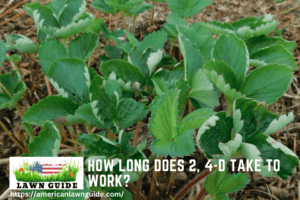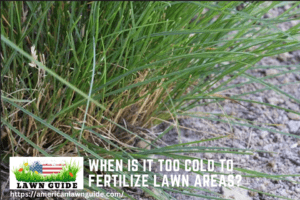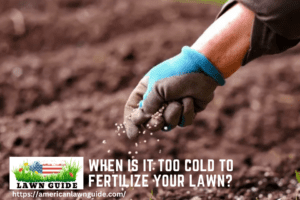21-7-14 fertilizer is most commonly used on turf grass, ornamentals, and vegetables. It provides a good balance of nitrogen, phosphorus, and potassium to promote healthy growth in plants. This fertilizer can be applied before planting or during the growing season to give plants a boost.
If you want to grow giant vegetables or giant flowers, then 21-7-14 is the fertilizer of choice. refers to the percentages of the three main nutrients contained in the fertilizer: nitrogen (N), phosphorus (P) and potassium (K). fertilizer, this ratio is common among most garden fertilizers. The rest of the fertilizer’s contents typically consist of microorganisms that help break down organic matter and turn it into usable nutrients.
This type of fertilizer is often used on lawns, gardens, and flower beds to help promote growth and prevent deficiency in these important nutrients.
One week update Bandini Pro Choice Lawn Fertilizer 21-7-14
What are the Three 3 Kinds of Fertilizer to Apply?
Fertilizers are materials that are added to soil to provide essential nutrients for plant growth. There are three primary types of fertilizer: inorganic, organic, and biologic. Inorganic fertilizers are made from synthetic chemicals and minerals.
They can be quick-acting and provide a high concentration of nutrients, but they can also be more expensive than organic options. Inorganic fertilizers can also be less environmentally friendly because they may contain heavy metals or other harmful toxins. Organic fertilizers are made from natural sources like plants, animals, or minerals.
They can be slower to release nutrients than inorganic fertilizers, but they are often more sustainable and less expensive. Additionally, organic matter can improve soil structure and drainage while providing essential nutrients for plants. Biologic fertilizers contain live bacteria or fungi that help improve plant health by increasing nutrient availability or improving root growth.
These products can be applied directly to the soil or added to irrigation water. Biologic fertilizers can help reduce the need for chemical pesticides and herbicides while promoting healthy plant growth.
What are the 3 Fertilizers That the Plant Needed?
Plants need three primary nutrients for healthy growth: nitrogen (N), phosphorus (P), and potassium (K). These are commonly referred to as the “big three” nutrients. Nitrogen is responsible for vegetative growth, phosphorus promotes root development and flowering, and potassium helps with overall disease resistance and water uptake.
There are many different types of fertilizers available on the market, but they all typically contain some combination of these three essential nutrients. It’s important to choose a fertilizer that’s formulated for the specific needs of your plants. For example, if you’re growing vegetables, you’ll want a fertilizer with a higher nitrogen content than one marketed for flowers or lawns.
Over-fertilizing can be just as harmful as not fertilizing at all, so it’s important to follow the directions on the fertilizer label and only apply as much as your plants need. If you have any questions about which fertilizer is right for your garden, ask a local nursery or gardening expert.
What is the Best Fertilizer for Plants to Grow Faster?
There are many different types of fertilizers available on the market, and each one is designed to provide specific nutrients that plants need to grow. However, not all fertilizers are created equal, and some can actually do more harm than good. With that in mind, here is a look at what is the best fertilizer for plants to grow faster.
Organic Fertilizer Organic fertilizer is made from natural materials such as manure, compost, or bone meal. It is a great option for those who want to avoid using synthetic chemicals on their plants.
Organic fertilizer does take longer to break down and release its nutrients into the soil, but it will eventually do so and provide your plants with the nourishment they need. Inorganic Fertilizer Inorganic fertilizer is made from synthetic materials and typically contains a higher concentration of nutrients than organic fertilizer.
This means that it can provide your plants with a quick boost of nutrition, helping them to grow faster. However, it’s important to be careful when using inorganic fertilizer, as too much can actually burn your plants’ roots. Which Fertilizer Is Best?
The answer to this question depends on your individual needs and preferences. If you want an all-natural option that will slowly release nutrients over time, then organic fertilizer is the way to go. On the other hand, if you’re looking for a quick fix that will give your plants an immediate boost of nutrition, then inorganic fertilizer may be a better option.
What is the best Time to Apply 21-7-14 Fertilizer?
The best time to apply 21-7-14 fertilizer depends on what you want to plant. For instance, if you are planning a vegetable garden, you should add it before springtime so that the fertilizer has time to break down and release its nutrients over time. If you are growing flowers, however, it would be better to add the fertilizer after they have bloomed so that their roots can benefit from its nutrients during the growing season. It is also important to note that adding too much 21-7-14 may harm your plants by burning them or causing them not enough water during hot weather conditions.

What is the Best Fertilizer Ratio for Lawns?
It’s often recommended that lawns be fertilized with a 3-1-2 ratio of nitrogen, phosphorus and potassium. However, the best fertilizer ratio for your lawn depends on its specific needs. A soil test can help you determine which nutrients your lawn is lacking so you can adjust the ratio accordingly.
For example, if your soil is deficient in phosphorus, you might use a fertilizer with an NPK ratio of 4-1-2 or 5-1-2.
Why use 21-7-14 instead of regular fertilizer?
Regular fertilizers often come in forms such as pellets or granules that must dissolve into water before being absorbed by plants’ roots; whereas liquid fertilisers – which are mixed with water prior spraying onto leaves/soil – require no extra steps for absorption since they penetrate right through foliage directly into root systems where nutrients are needed most quickly! Using these products ensures healthy growth because there’s no guessing on what type of nutrient needs each individual item requires .
How to Use 21-7-14 Fertilizer?
21-7-14 fertilizer contains a lot of nitrogen, which means you’ll want to be careful when applying it. You should never use it on young seedlings or plants that are drought-stressed. Over-application can burn your plants and even result in death, so always start with less than you think you need and work your way up. When preparing your garden beds, you should till in 21-7-14 fertilizer at a rate of 50 pounds per 1,000 square feet. your soil nutrients.
After planting your garden, apply 21-7-14 fertilizer every four weeks at a rate of 1 pound per 100 square feet. If you prefer organic fertilizers, blood meal and cottonseed meal are good choices. These fertilizers are rich in the nutrients that 21-7-14 lacks (phosphorus and potassium), allowing you to easily mix your own fertilizer.
Conclusion
21-7-14 fertilizer is a type of fertilizer that is used to help promote growth in plants. This type of fertilizer is made up of a combination of nitrogen, phosphorus, and potassium. These three elements are essential for plant growth and development.
21-7-14 fertilizer can be used on both indoor and outdoor plants.




